The development stage and color of coffee roasting-what is complete and incomplete development?
Professional coffee knowledge exchange more coffee bean information please follow the coffee workshop (Wechat official account cafe_style)
There are three floating indicators of baking degree in coffee roasting: color, degree of development and temperature out of the oven. Today, let's put aside the temperature with the greatest difference and discuss the development and color of coffee.
There are many color criteria about the degree of roasting in coffee roasting, including 4, 8, 16, 32, 64. Well, for many bakers, it is as difficult to identify exactly which baking degree a bean's baking color belongs to as it is to identify the color number of various lipsticks. Coffee beans also have many "color numbers", but none of them is the accepted standard for the best baking color value.
Therefore, it is enough for us to simply distinguish the baking colors into "light", "medium" and "dark". Define "shallow" as all beans that are too shallow for your taste, "medium" is your ideal baking degree, and "deep" can be defined as anything that is too deep for you. Regardless of whether you like cinnamon baking or city baking, except for the development range you like, everything else is shallow or deep that you hate.
The development stage of coffee roasting
Let's get back to the point. The developmental stage of coffee roasting refers to the stage from the beginning of the explosion to the end of the roasting, in which very complex situations can occur, such as:
The Mena reaction continues, and new reactants are formed.
Degradation of chlorogenic acid, citric acid and malic acid
Formation of acetic acid (decomposition of common sugar), quinic acid (decomposition of chlorogenic acid), formic acid and other organic acids
Caramelization of sucrose
High temperature pyrolysis reaction
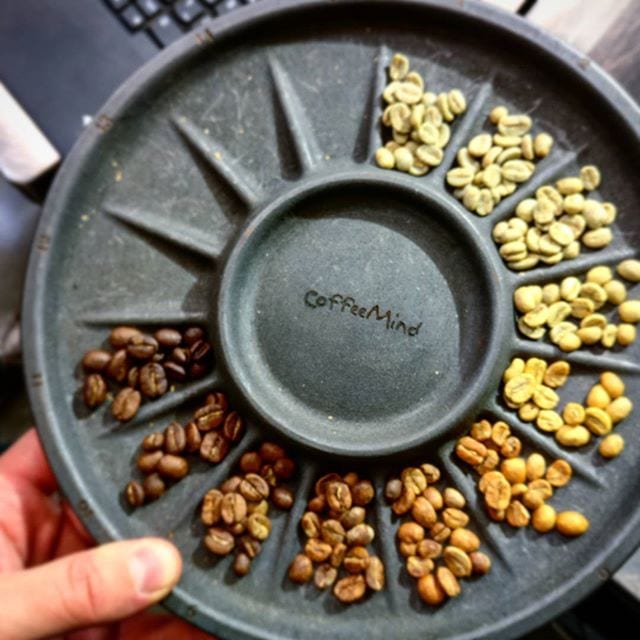
The "explosion point" is usually regarded as the beginning of the development period, and the time after the explosion is the "development time". Here is a knowledge point that we need to put aside past experience and habits to understand: the baking color does not represent the degree of development of coffee beans. Low roasting color value (dark color) does not mean that coffee beans are fully developed, and vice versa, high baking color value (light color) does not mean that coffee beans are underdeveloped. The degree of development of coffee beans in the roasting process is not inevitable with the color.
Some beans are not sweet even if they are scorched black on the surface; some beans are still sour and sweet with complex flavor even if they are light in color. This is the reason for development, with the appropriate development process, any reasonable baking color, may have a rich and sweet performance.
Fully developed coffee beans should not have any uncomfortable flavor (salty taste, grass, plant roots, dead leaves, straw, etc.). Its structure has been decomposed, and water can easily enter and dissolve the flavor substances inside the coffee beans. It is extremely difficult to develop coffee beans perfectly, and most bean dryers do not have this ability.
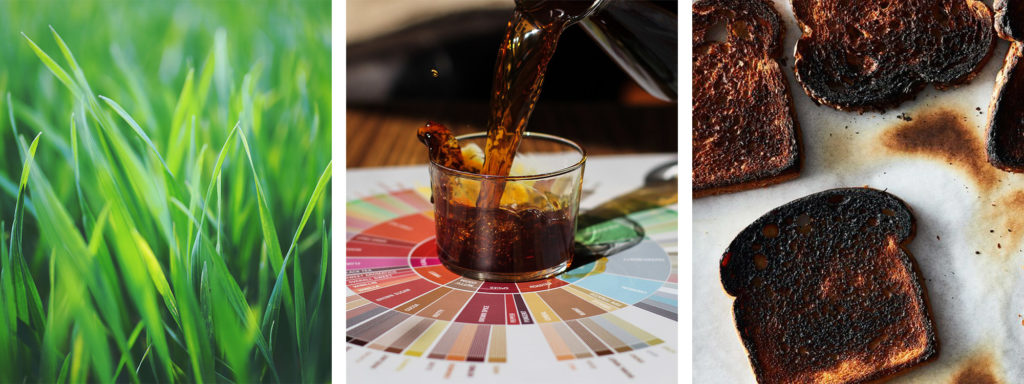
To put it simply:
If your coffee beans do not have the flavor of grass, vegetables, toast, salty taste, etc., then it is fully developed. Beans in this case are usually baked to a medium or dark color.
If your coffee still has the flavor of grass, vegetables, toast, salty taste and so on, then it is not fully developed. This means that some part of the coffee bean is lightly roasted, and you can tell. This usually occurs when the temperature drops suddenly after an explosion, or it is baked at a low temperature for a long time after an explosion.
So, are there any "overdeveloped" coffee beans? Yes, but extremely rare. Generally speaking, the flavor is very empty and uncharacteristic, with the taste of roasting and burning grain, the color of the coffee is also light, and the entrance is greasy (not BODY mellow, pay attention to distinction). Of course, in most cases, many people are just describing the situation of baking "too deep", which is so deep that the flavor is burned out, leaving only bitterness. But baking development is not as obvious as color, baking "too deep" does not necessarily mean overdevelopment, it may be just one of the stages of development.
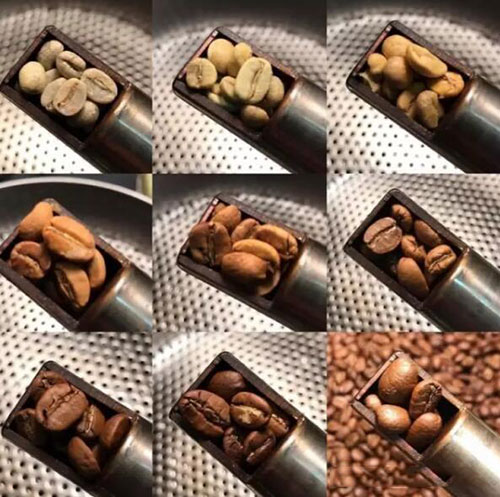
In fact, judging the development of coffee beans is a very simple question:
Is there any underdeveloped flavor of beans?
_ Yes (underdeveloped)
_ No (fully developed)
Here's an important lesson about baking: the degree of development and baking color are completely different. During the whole roasting process of coffee beans, different regions have different baking degrees, and the inside of the bean core is always shallower than the outside, because it takes a certain amount of time for heat to transfer from the bean surface to the bean core. This means that even if the appearance of coffee beans reaches the degree of baking represented by a roasting color value, the bean core may still be far behind; the bean surface is fully developed, while the bean core is underdeveloped, which is the "uneven development" of coffee roasting. If any part of the inside of the coffee bean shows the taste of underdevelopment, then the whole coffee bean is underdeveloped.
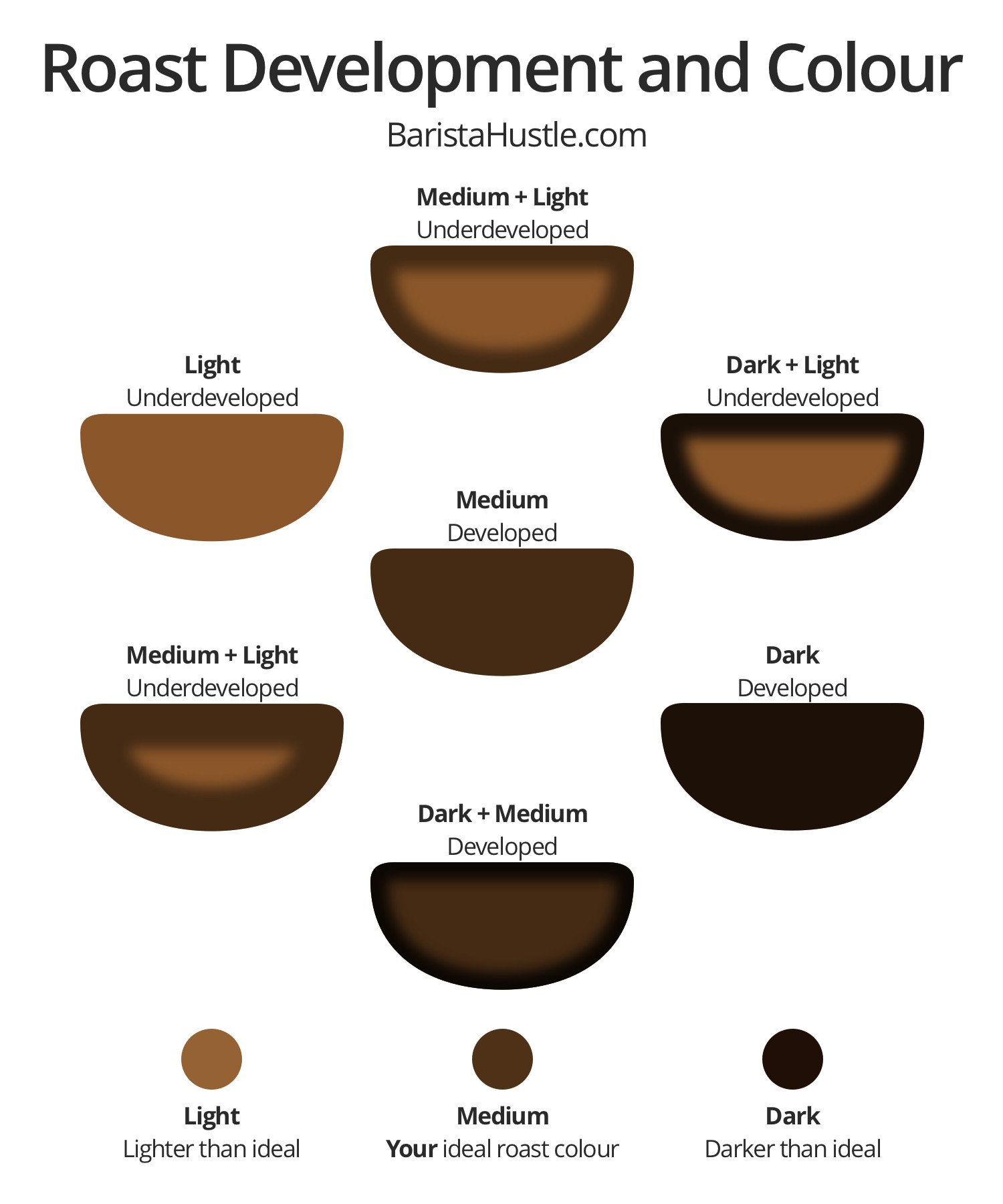
Here are some things to pay attention to in this drawing:
Coffee beans with dark outside and light inside are underdeveloped, even if the color on the outside is too dark.
Coffee beans with medium outside and shallow inside are also underdeveloped, even if they are only a little shallow in the middle.
Only the coffee beans with deep outside and middle inside can be regarded as fully developed and not overdeveloped.
Finally, please remember. "medium" refers to your favorite and ideal baking color, not medium baking or medium baking, nor is it my favorite color or other people's favorite color. If your ideal baking color is green grass or black carbon, please pretend I didn't say anything.
The development stage of coffee roasting is also the stage of determining the final flavor, and the process is the choice of chemical reaction products, with emphasis on balance, while the balance of coffee flavor is a bit like the composition of photography or painting, with different ways and ingenuity. But the point is to make people feel happy after drinking it.
END
Important Notice :
前街咖啡 FrontStreet Coffee has moved to new addredd:
FrontStreet Coffee Address: 315,Donghua East Road,GuangZhou
Tel:020 38364473
- Prev
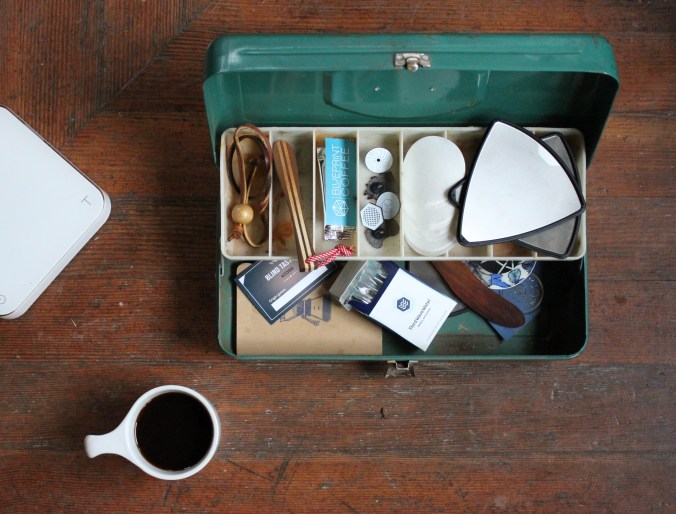
[handmade coffee repair kit] Why is your coffee still not good?
Professional coffee knowledge exchange more coffee bean information Please follow the coffee workshop (Wechat official account cafe_style) with the popularity of hand-brewed coffee, many coffee lovers will choose to put a set of hand-brewing utensils at home or in the office to take advantage of their spare time to have a brew. But there is often a situation: after many people make too much, they will brew coffee to their own hands.
- Next
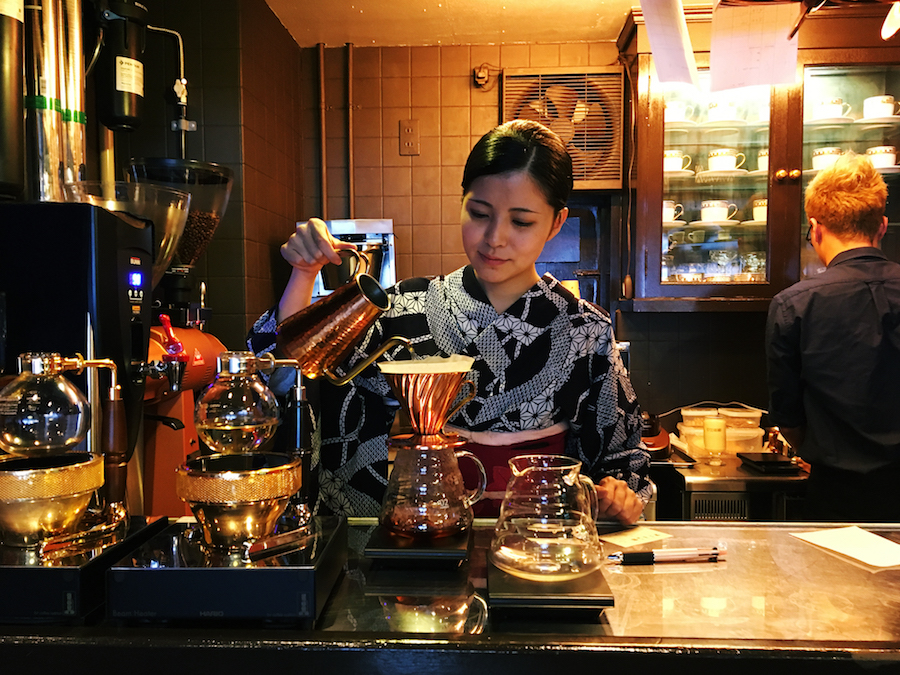
"non-boutique coffee" must be very bad? Are all beans less than 80 points rotten?
Professional coffee knowledge exchange more coffee bean information please pay attention to the coffee workshop (Wechat official account cafe_style) supermarket can not buy good coffee? Why do so many people complain about Starbucks coffee beans? If you have your own bakery, the coffee must be good? If we want to know these things, we need to clarify a good objective definition. But in the world of wine or coffee,
Related
- Beginners will see the "Coffee pull flower" guide!
- What is the difference between ice blog purified milk and ordinary milk coffee?
- Why is the Philippines the largest producer of crops in Liberia?
- For coffee extraction, should the fine powder be retained?
- How does extracted espresso fill pressed powder? How much strength does it take to press the powder?
- How to make jasmine cold extract coffee? Is the jasmine + latte good?
- Will this little toy really make the coffee taste better? How does Lily Drip affect coffee extraction?
- Will the action of slapping the filter cup also affect coffee extraction?
- What's the difference between powder-to-water ratio and powder-to-liquid ratio?
- What is the Ethiopian local species? What does it have to do with Heirloom native species?

